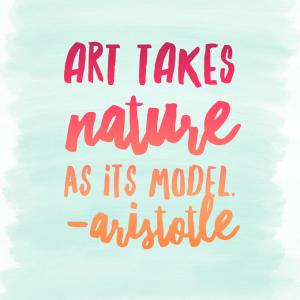In the years when scientists failed to convince world leaders about the potential harmful effects of global warming, science had turned to art for support. This spawned the birth of what is known in the art world as “climate change art.” The kind that art activists created to make nations understand the reality of the global warming phenomenon scientists have been warning us for decades. Unfortunately, the phenomenon is now a reality as nations across the globe are now experiencing the harmful effects of climate change.
Why Scientists Turned to Artists for Help
https://youtu.be/L2xCFAmymsI
In 2005, American environmentalist and journalist William “Bill’ McKibben wrote an article that drew art activists’ attention. Mr. McKibben explained that if science wants to move forward with meaningful changes, convincing human societies would take more than presentation of scientific facts as those are proofs that require intellectual understanding. This American environmentalist suggested that what they needed to do to tackle the problem is to appeal to the emotional intellect of the people; to which he wrote that the professionals best suited to help them achieve changes are the visual artists.
Although according to The Arctic Cycle art organization, it took quite some time before climate change arts took off because not many artists were quick to heed Mr. McKibben’s call.
Today, “climate change art” is a genre of its own, with global warming and climate change as the main subjects as a way to invoke personal experience. Through art works, audiences started developing an emotional connection to global occurrences manifesting the effects of global warming and the resulting climate change. Humans are said to value personal experience more than they do tons of scientific data, because artworks are more vivid and powerful.
According to The Guardian, by 2009, even art institutions have woken to the need to promote “climate change art;” rather than be seduced by the wealthy donors and sponsors who own businesses that contributed to the toxic emissions that speeded up the climate changes caused by global warming.
Still, researchers Christian Andreas Klöckner and Laura Kim Sommer wrote in a 2019 report that for “climate change art” to be effective in bringing about reforms, the message of the artwork must include hope and ideas on how to bring about mass modifications.
Rising Incidences of Asthma and Allergies Worldwide a Primary Evidence of Harmful Effects of Climate Change
Spring and all its colors seemed to bring the freshest air that humans could breathe. Yet unfortunately, it is also the time of year when people suffer from allergic rhinitis and asthma attacks. Scientific data shows that climate change has been causing increases in allergens in the air due to the following reasons:
Climate change is associated with rising temperatures, changes in worldwide weather patterns and increasing airborne pollen levels and duration. These changes have been observed to impact health, including that of allergic individuals.
The protein compositions of pollens and the emergence of fungal spores are affected by aerobiological processes impacted by greenhouse gas emissions and depositions linked to changing rainfall and wind patterns.
The changes in climate can extend the duration by which grasses, trees and winds produce pollens and therefore increase the amount of pollens transported by the aerobiological processes.
Severe storms and massive flooding resulted in more buildings becoming damp to likely produce molds and mildew, exposing building inhabitants to indoor air contaminated with fungal microbes.
In all those occurrences described above, allergic reactions in the form of conjunctivitis, rhinitis and asthma in many American states have been noted. The reports are founded by information connected to the high numbers of individuals purchasing medications for all sorts of allergic reactions. Supplements like the apetamin pills have been found helpful as medications for allergies even if they are primarily being taken as weight-gain remedies.




